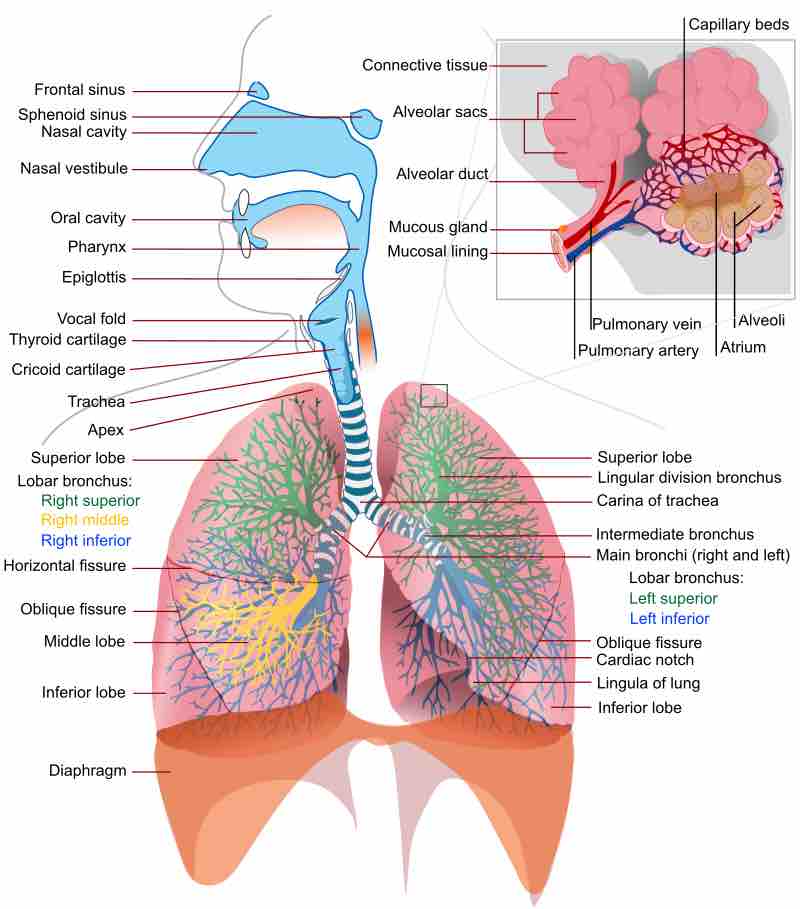Inspiration refers to inhalation, and is the flow of the respiratory current into an organism. In humans it is the movement of ambient air through the airways, and into the alveoli of the lungs.
The Process of Inspiration
Inspiration begins with the contraction of the diaphragm, which results in expansion of the thoracic cavity and the pleural cavity. The pleural cavity normally has a lower pressure compared to ambient air (-3 mmHg normally and typically -6 mmHg during inspiration), so when it expands, the pressure inside the lungs drops. Pressure and volume are inversely related to eachother, so the drop in pressure inside the lung increases the volume of air inside the lung by drawing outside air into the lung. As the volume of air inside the lung increases, the lung pushes back against the expanded pleural cavity as a result of the drop in intrapleural pressure (pressure inside the pleural cavity).
The force of the intrapleural pressure is even enough to hold the lungs open during inpiration despite the natural elastic recoil of the lung. The alveolar sacs themselves also expand as a result of being filled with air during inspiration, which contributes to the expansion inside the lung. Eventually, the pressure inside the lung becomes less negative as the volume inside the lung increases, and when pressure and volume stabilize, the air movement stops, inspiration ends, and expiration (exhalation) will begin. Deeper breaths have higher tidal volumes and require a greater drop in intrapleural compared to shallower breaths.

Respiratory System
Resistance in any part of the respiratory tract can cause problems.
Accessory Muscles of Inspiration
The diaphragm is the primary muscle involved in breathing, however several other muscles play a role in certain circumstances. These muscles are referred to as accessory muscles of inhalation.
- External intercostal muscles: muscles located in between the ribs that help the thoracic cavity (and thus pleural cavity) to expand during quiet and forced inspiration.
- Scalene muscles: muscles in the neck that lift the upper ribs (and thoracic cavity around the upper ribs) to help with breathing. They provide a mechanism for inspiration when the diaphragm is injured and can't contract normally.
- Sternocleidomastoid muscle: muscles that connect the sternum to the neck and allow for rotation and turning of the head. They can life the upper ribs like the scalene muscles can.
- Trapezius muscle: muscles in the shoulders, which retracts the scapula and expands the upper part of the thoracic cavity.
The accessory muscles assist breathing by expanding the thoracic cavity in a similar way to the diaphragm. However, they expand a much smaller part of the thoracic cavity compared to diaphragm. Therefore they should not be used as the primary mechanism of inhalation, because they take in much less air compared to the diaphragm resulting in a much lower tidal volume. For example, singers need a lot of air to support the powerful voice production in singing. A common problem in novice singers is breathing with the accessory muscles of the neck, shoulder, and ribs instead of the diaphragm, which gives them a much smaller air supply than what is needed to sing properly.